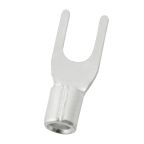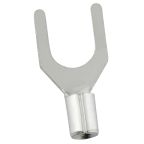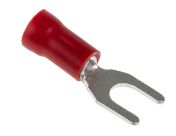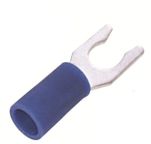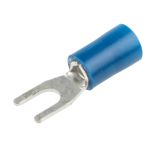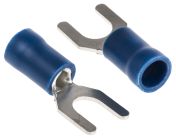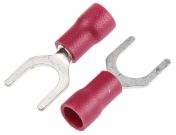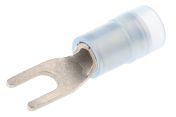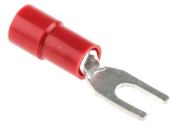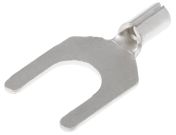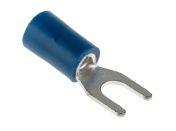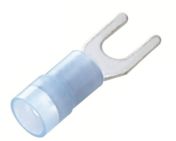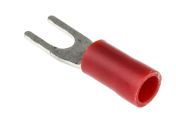Fork Terminals
A crimp spade terminal, also known as a fork or split ring is a short metal tube with flat fork attached. The tube or barrel end of the crimp is a hollow tube where the stranded wire is inserted and crimped. The contact or connection end is a flat fork with a central hole which connects to a stud or bolt. Ring terminals are insulated or non-insulated.
What do fork terminals do?
An electrical crimp is a solderless electrical connection. Fork terminals are used to connect wiring to screws and studs.
What can you use fork terminals for?
- Electrical panels
- Terminal blocks
- Wiring harnesses
Types
Crimp terminals are available in a wide variety of ring sizes and wire sizes. The CSA (cross sectional area) or AWG (American wire gauge) of the stranded wire is the most critical. The size of the stranded wire must be adequately matched to meet the amperage. The size of the fork is matched to the bolt or stud size, usually in a metric measurement.
Insulated Terminals
DIN 46237 colour coding is the most popular type of crimp terminal. Colour coding is used to denote a wire size.
- Red 0.5 mm² to 1.5 mm²
- Yellow 2.5 mm² to 6 mm²
- Blue 1.5 mm² to 2.5 mm²
Other colours by different manufactures are now available.
Non-insulated
Non-insulated terminals are bigger terminals. Non-insulated terminals connect to bigger studs and bolts. Non-insulated fork terminals have the capacity to except larger stranded wire. More specialised tooling is required for these heavy-duty terminals.
